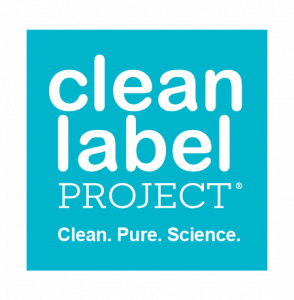New Report Finds Harmful Plastic Chemicals in Nearly 95% of Popular Legacy and WIC-Approved Infant Formulas
Clean Label Project Study Detects DBP and DEHP in Leading Infant Formula Brands, Raising Safety Concerns for America's Most Vulnerable Population
DENVER, CO, UNITED STATES, October 17, 2025 /EINPresswire.com/ -- A new report released today by the Clean Label Project reveals that the vast majority of leading legacy and WIC-approved infant formulas contain industrial plastic chemicals known to pose serious health risks to infants and children. The study found that an alarming 94.7% of tested legacy and retail products were contaminated with harmful phthalates DBP (di-n-butyl phthalate) and/or DEHP (di(2-ethylhexyl) phthalate), chemicals linked to reproductive and developmental harm. Additionally, 21.1% of these products tested positive for bisphenols (BPA or BPS).The findings come from an independent evaluation of 59 infant formula products, including 19 top-selling retail and WIC-approved brands that represent a significant portion of the $7.5 billion U.S. infant formula market. Clean Label Project partnered with Ellipse Analytics, an ISO 17025-accredited lab, to perform over 9,000 individual contaminant tests, screening for phthalates, heavy metals, bisphenols, pesticides, glyphosate, and other industrial toxins.
"We have the data to inform the standards for infant formula, products that nourish our most vulnerable population," said Molly Hamilton, Executive Director of Clean Label Project. "It's critical that we update these standards to ensure formulas are both nutrient-dense and clean to support the long-term health of our children. Parents trust these products to provide essential nutrition, but our testing reveals they may be exposing their babies to harmful industrial chemicals with every feeding."
Why It Matters
DBP and DEHP are phthalates, a class of chemicals widely used in plastics and processing equipment. They are recognized endocrine disruptors and are associated with serious health risks including:
- Reduced male fertility
- Developmental delays and behavioral changes in children
- Increased risk of obesity, allergic disease, and Type 2 diabetes
Infants and pregnant women are particularly vulnerable to phthalate exposure, which can occur through ingestion of contaminated formula. These chemicals can enter infant formula through environmental exposure, ingredients, manufacturing processing, and packaging materials.
The study revealed stark differences between legacy and non-legacy brands:
- Legacy brands: 31.6% tested positive for DBP; 94.7% tested positive for DEHP
- Non-legacy brands: 2.5% tested positive for DBP; 7.5% tested positive for DEHP
WIC Program Implications
Over 50% of U.S. infant formula is purchased by states through the WIC (Women, Infants, and Children) program. The detection of plastic chemicals in WIC-approved formulas raises urgent questions about safety standards for products subsidized by federal nutrition assistance programs serving low-income families.
Despite the widespread detection of these contaminants, there are no comprehensive federal regulations specifically addressing dietary exposure to industrial chemicals like phthalates in infant formula, as most safety measures concentrate on physical and microbiological contaminants.
Positive News on Heavy Metals
The study also found encouraging progress on heavy metal contamination. Levels of arsenic, cadmium, and lead have dropped significantly since Clean Label Project's previous infant formula study four years ago, demonstrating that industry improvements are possible when attention is focused on specific contaminants.
Read the Full Report
To view the complete methodology, tested brands, and contamination breakdown, visit:
https://cleanlabelproject.org/infant-formula-study/
About Clean Label Project
Clean Label Project is a nonprofit dedicated to promoting transparency in consumer product labeling and holding manufacturers accountable through independent testing for environmental and industrial contaminants. The organization's mission is to uncover hidden risks associated with environmental contaminants and toxins found in everyday products, with the guiding principle that reducing contaminants is critical to safeguarding long-term health.
Kate Stuard
Clean Label Project
kate@dsjstrat.com
Legal Disclaimer:
EIN Presswire provides this news content "as is" without warranty of any kind. We do not accept any responsibility or liability for the accuracy, content, images, videos, licenses, completeness, legality, or reliability of the information contained in this article. If you have any complaints or copyright issues related to this article, kindly contact the author above.

